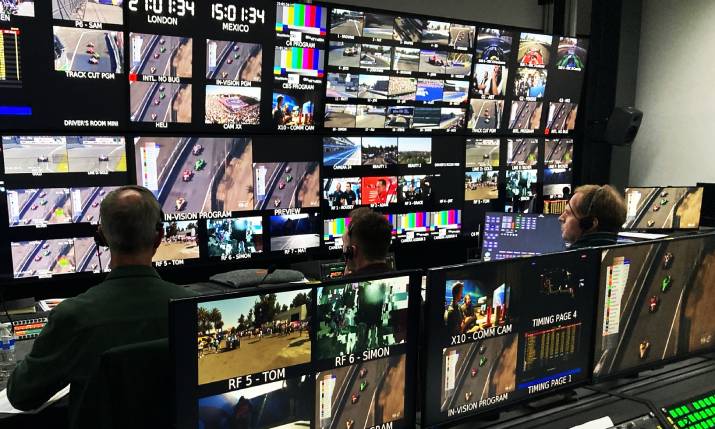Expanding capabilities: Gravity on the ever-growing demand for remote production

Data from Formula E cars, and also with the addition of new onboard cameras developed for Formula E by Timeline TV, is about to help bring the story of each race, each car and each driver to life with new insight. Pictured here, Gravity Media’s Westworks production centre in London where this is all bought together
By Ed Tischler, Gravity Media managing director.
Content is king, and the demand for it is skyrocketing! 2023 has seen a surge in the need for all sorts of media, and the industry has responded by embracing remote production solutions.
Notably, the industry has adapted to the increase in remote production service solutions, allowing for more flexible and cost-effective content creation. This shift, sparked by the COVID-19 pandemic, has opened up a whole new world of possibilities for creating content in a more flexible and cost-effective way.
The demand for content has always been a driving force in the media and entertainment industry. However, the advent of the COVID-19 pandemic brought about unprecedented challenges that forced the industry to innovate. Traditional methods of content creation, involving large in-person crews and on-site productions, were no longer feasible in a world grappling with social distancing measures and lockdowns.
Enter remote production solutions – a paradigm shift that not only addressed the immediate challenges but also emerged as a cost-effective and flexible alternative.
To meet the demands of remote production, substantial investments in technology and workflows that facilitate collaboration and content capture from dispersed locations became imperative.
In the cloud
Cloud-based solutions played a pivotal role in enabling remote production workflows. The ability to store, access and collaborate on content from anywhere in the world became a game-changer. This not only ensured business continuity during challenging times but also opened up new possibilities for a more geographically diverse and inclusive content creation process.
The industry has witnessed a transformative impact, with remote production becoming more than just a response to a crisis; it has become a strategic choice for content creators. The advantages of cost-effectiveness, flexibility and increased access to talent from various locations have solidified remote production as a prominent trend.
The continuous evolution of technology is a driving force behind the growing capabilities of remote production. Advancements in high-speed internet, 5G connectivity and the proliferation of cutting-edge equipment have created an environment conducive to seamless remote collaboration. Virtual and augmented reality technologies have further elevated the remote production experience, allowing for immersive and engaging content creation from diverse locations.
While the benefits of remote production are undeniable, challenges persist. Ensuring the security of sensitive data, maintaining consistent quality across dispersed locations, and addressing potential technological glitches are among the hurdles content creators face. However, the industry’s response has been swift, with continuous innovations and refinements in remote production solutions.
Collaborative efforts between technology providers, content creators and industry experts are fostering the development of more robust tools and protocols.
There will be continued emphasis on remote production, remaining as a prominent trend in 2024. Advances in technology and the need for flexibility will keep pushing the industry to refine and expand remote production capabilities.

